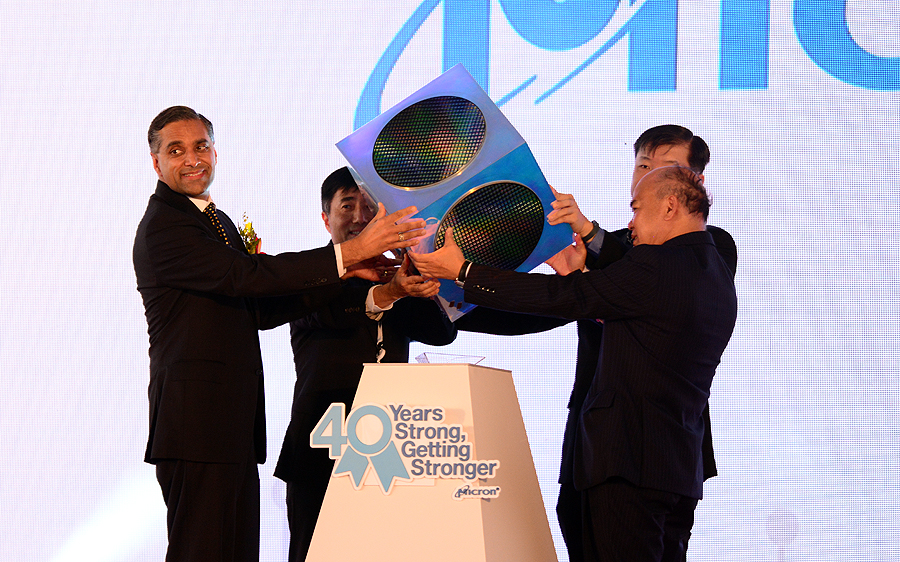Micron Tweaks NVDIMM Architecture
Micron Technology is doubling the capacity of its non-volatile dual in-line memory modules (NVDIMMs), which enable the persistent memory to hold larger data sets, and may be a portent of accelerated adoption in the coming year.
But just as important as the density of Micron's 32GB NVDIMM-N are latency and bandwidth, said Ryan Baxter, director of marketing for the company's compute and networking business unit. Moving data to and from the NVDIMM are just as important, otherwise the system doesn't get the benefits. “You don't want a NVDIMM to slow your entire system," Baxter said.
Micron's new module boasts fast data transfer rates of PC4-2933, PC4-2666, or PC4-2400.
What makes persistent memory such as a NVDIMM different from DRAM is that it's able to hold onto information in case of a power loss. To date, the primary function of a NVDIMM has been to keep data hot so that operations can be quickly resumed when the power comes back. But as data center storage volumes grow, higher capacity NVDIMMs can support the increasing performance, energy efficiency and uptime requirements of data analytics and online transaction processing applications.
Applications that have frequent updates, such as such as journaling or transactional logging of metadata, can run those functions in NVDIMMs, and the increased capacity of Micron's latest offering means larger, more “mainstream" data sets such as those for database queries can also be accommodated, said Baxter. These data sets can be retained in-memory to improve access speeds as placing fast memory near the processor reduces the need to transfer data from far storage.
Micron has also made some architecture tweaks, said Baxter. While its predecessor used a discrete MUX, which limited speeds, the new model incorporates the MUX into the DRAM itself. This is what enables higher bus speeds of up to 2933 MTps on overclocked systems, he said, because the integrated MUX clears the signal path. “This future-proofs the ability for persistent memory to be leveraged over the next couple of years," Baxter said.
Even with this architecture change, Baxter said Micron's 32GB NVDIMM-N conforms to the Jedec specs and is backward compatible. Outside of the FPGA, it uses all Micron components. “We might have to spin a new PCB, but everything about the architecture is scalable, Baxter said. He said it's an evolutionary step in terms of density and speed, and scalable to 64GB, even though it's not formally in the roadmap, as there's yet to be enough demand.
Micron's 32GB NVDIMM-N is also leveraging its proprietary technology to make TLC NAND perform like SLC NAND, said Baxter.
NAND, of course, is not the only option for NVDIMM. Other memories, including 3D Xpoint, are also potential candidates. “It depends on what the application is," Baxter said.
Next year looks to be a tipping point for NVDIMM adoption. Research firm Objective Analysis recently forecast that the NVDIMM market will grow at a 105 percent average annual rate to nearly 12 million units by 2021.
Steve McDowell, senior analyst for servers and storage at Moor Insights & Strategy, also sees NVDIMMs coming into their own in the next 12 months. “The tipping point is near," McDowell said.
Pushing it forward are the improved performance, McDowell said, and the enabling of the software stack, citing standards being pushed by the Storage Networking Industry Association (SNIA) that are being picked up by vendors such as Microsoft, which has incorporated them into SQL Server 2016, for example. “What that's doing is giving the application guys the ability to leverage persistent memory much like they do DRAM today," McDowell said.
“Once you can treat memory as persistent without worrying about wear leveling and the latency you get with SSDs, it changes the game," said McDowell. “You don't to have treat things like files. Things like checkpointing and journaling become a lot easier." I
t's going to change the way people think about application architectures, McDowell added.
But for the applications to treat persistent memory like memory, it can't stall, added McDowell, so Micron is right to focus on the transfer rates, and that's what's going to make the difference whether applications leverage persistent memory. “It's more about latency than IOPs," he said.
The current density is good enough for now, McDowell said, and competitive with what everyone else doing. “That's going to change," he said. "It's not where we stop."
What's more exciting to McDowell is Micron's architectural changes, such as moving MUXes around to reduce latency. “Those kind of innovations are what will carry forward," he said. "Density will come. But around that density you want architectural tweaks that are improving the throughput and latency."
在线留言询价

Micron to buy-out Intel's IM Flash

Micron Sees Weak Market Ahead

Micron collaborates with premium German automaker to advance automotive memory technologies
- 一周热料
- 紧缺物料秒杀
| 型号 | 品牌 | 询价 |
|---|---|---|
| MC33074DR2G | onsemi | |
| BD71847AMWV-E2 | ROHM Semiconductor | |
| TL431ACLPR | Texas Instruments | |
| CDZVT2R20B | ROHM Semiconductor | |
| RB751G-40T2R | ROHM Semiconductor |
| 型号 | 品牌 | 抢购 |
|---|---|---|
| ESR03EZPJ151 | ROHM Semiconductor | |
| IPZ40N04S5L4R8ATMA1 | Infineon Technologies | |
| BP3621 | ROHM Semiconductor | |
| STM32F429IGT6 | STMicroelectronics | |
| BU33JA2MNVX-CTL | ROHM Semiconductor | |
| TPS63050YFFR | Texas Instruments |
- 周排行榜
- 月排行榜
AMEYA360公众号二维码
识别二维码,即可关注























